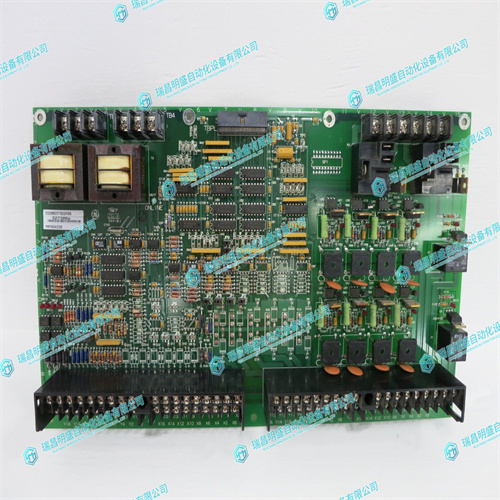GE DS200DDTBG2A涡轮机控制端子板
这些参数以特定顺序实现到用户定义的结构中,具体顺序取决于对数据日志的选择。PQM内存映射中的地址1270h是数据日志使用的第一个可用参数的保持寄存器。数据日志将根据PQM内存映射中的相应顺序将用户选择的参数放入各自的记录结构中。例如,如果选择正kWh、频率和电流不平衡作为测量参数,它们将按以下顺序放入记录结构:不平衡2字节(16位值)频率2字节(6位值)正kWh4字节(32位值)下页的数据日志参数表说明了参数的顺序及其大小。因此,记录大小将为8字节。要将时间值与每个记录关联,必须从标题中读取日志时间和日期。这是日志中最后一条记录的时间。要给使用的第一个记录加上时间戳,请将“日志时间间隔”乘以“使用的日志记录”,然后从与最后一个记录相关的时间中减去该数字。
These parameters are implemented into the user-defined structure in a specific order based upon selection into either, or both, Data Log(s). Address 1270h in the PQM Memory Map is the Holding Register for the first available parameter for use by the Data Logs. The Data Logs will place the user-selected parameters into their respective Record structures based upon their respective order in the PQM Memory Map. For example, if Positive kWh, Frequency and Current Unbalance were selected to be measured parameters, they would be placed into the Record structure in the following order: Unbalance2 bytes(16 bit value) Frequency2 bytes(16 bit value) Positive kWh4 bytes(32 bit value) The DATA LOG PARAMETERS table on the following page illustrates the order of parameters and their size.Therefore, the Record size would be 8 bytes. To put a time value associated with each Record, you must read the Log Time and Date from the Header. This is the time of the last Record in the Log. To time stamp the first Record used, multiply the Log Time Interval by the Log Records Used and subtract this number from the time associated with the last Record.













